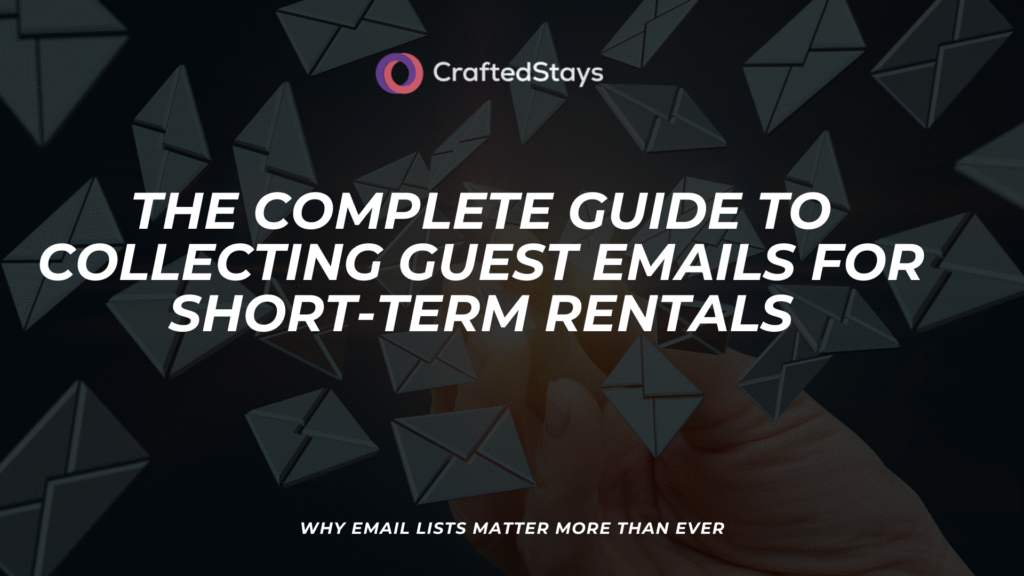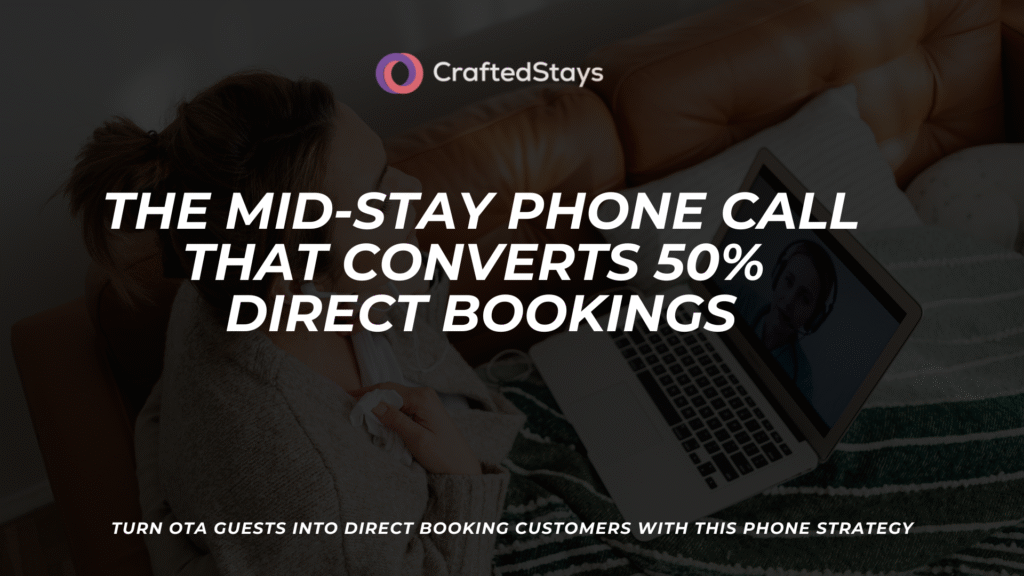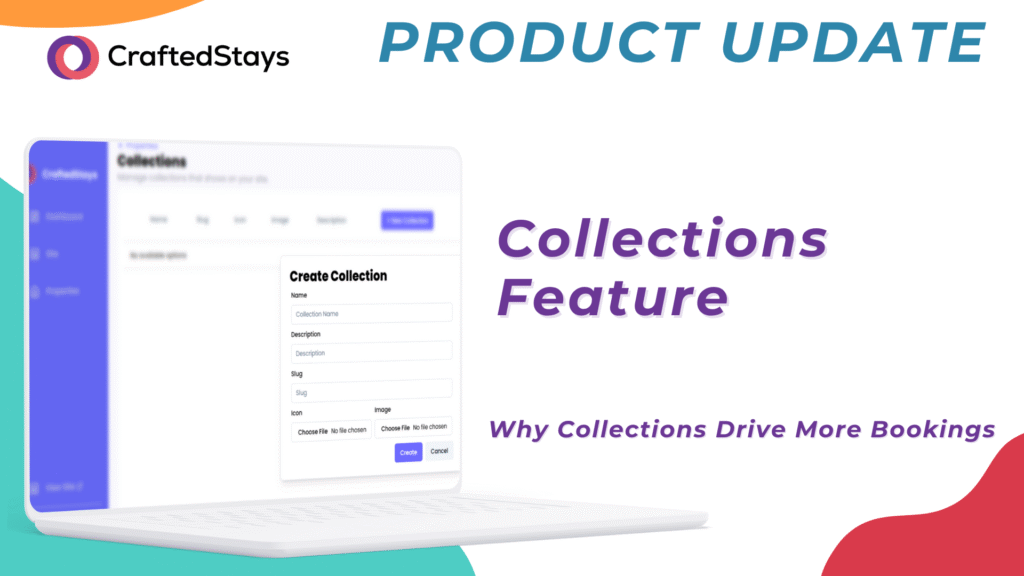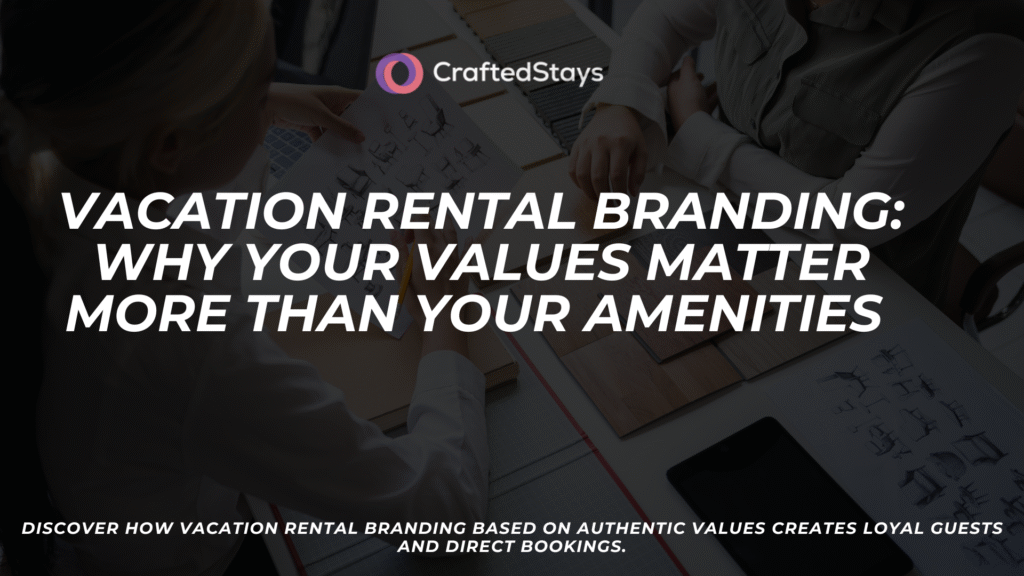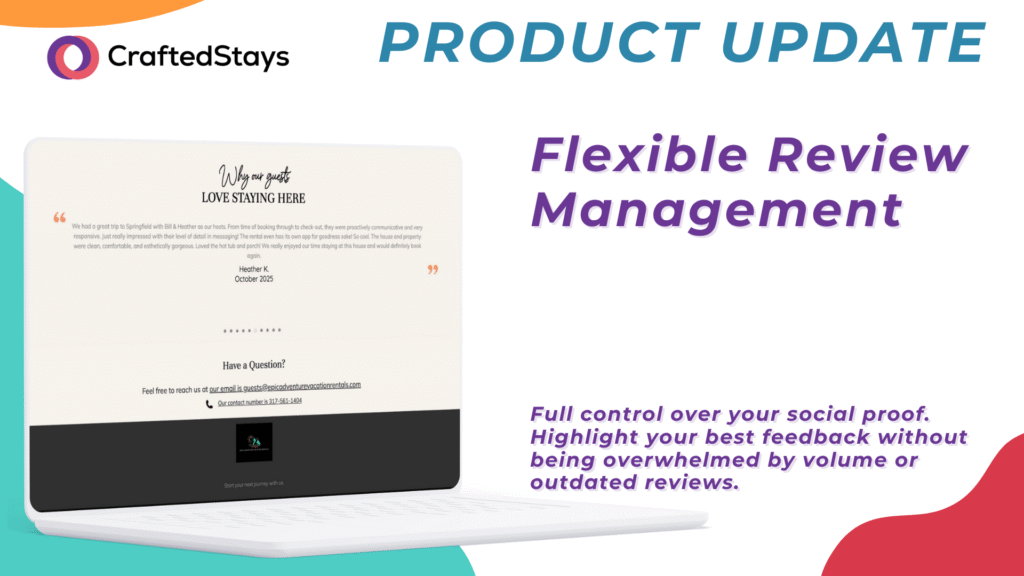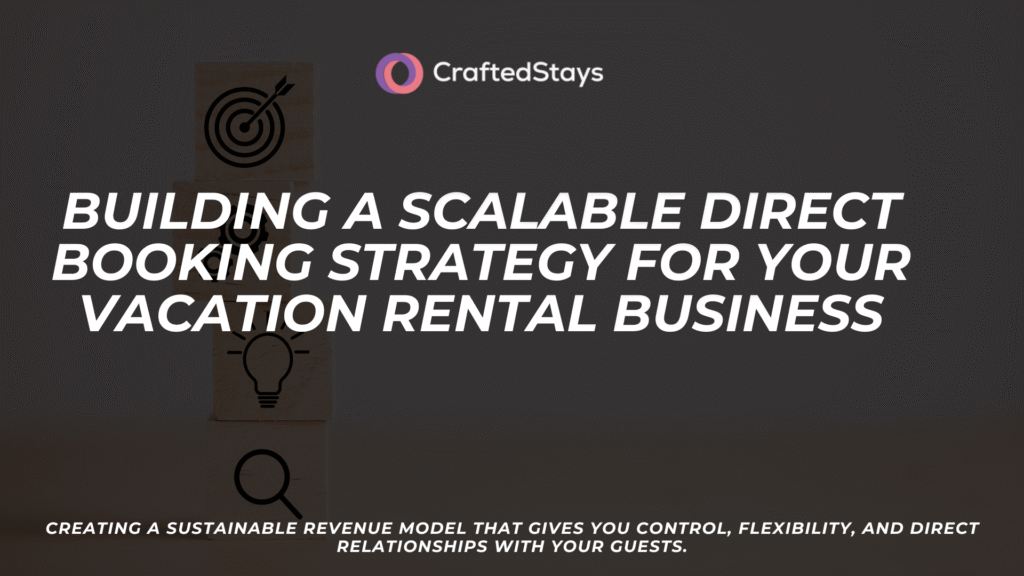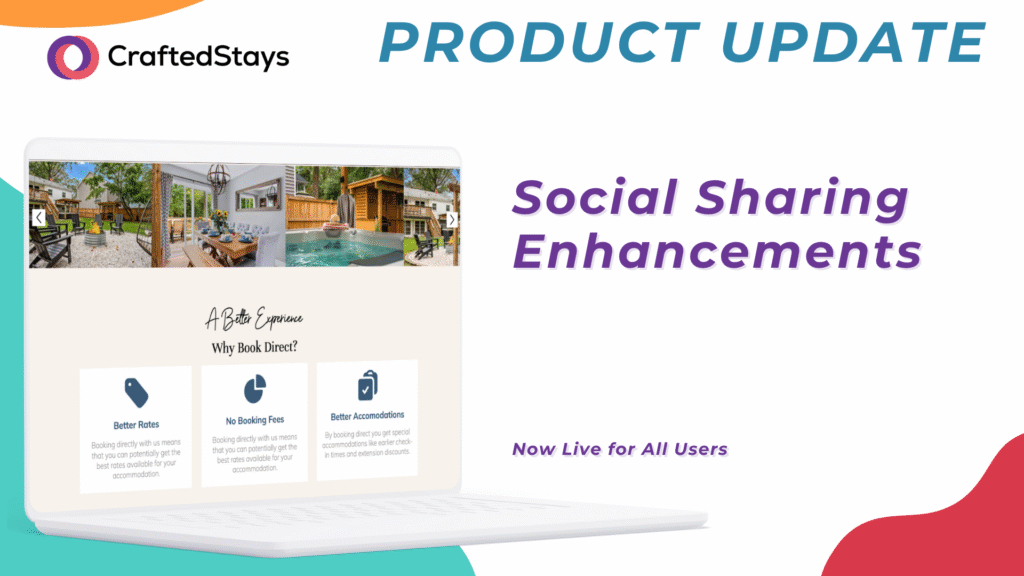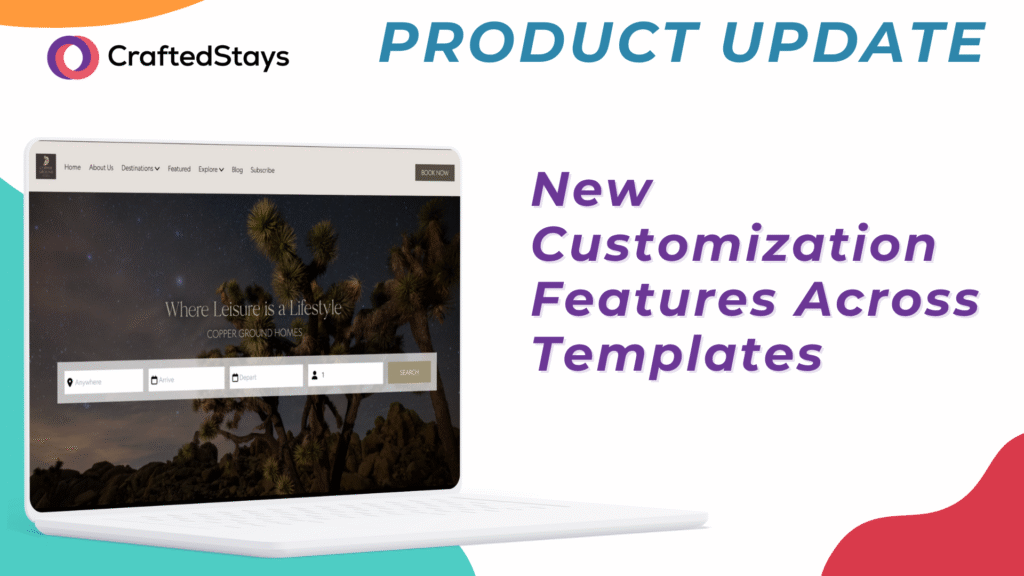The Complete Guide to Collecting Guest Emails for Short-Term Rentals
If you’re still relying on Airbnb and Vrbo to own your guest relationships, you’re renting your business instead of building it. Every booking through an OTA means someone else controls the conversation, the data, and ultimately, the repeat business. The most successful property managers in 2025 aren’t just collecting bookings—they’re collecting emails. And they’re doing it systematically, across every touchpoint of the guest journey. This guide breaks down exactly how to build an email list that turns one-time guests into repeat bookers, without spending thousands on ads or hiring a marketing agency. Why Email Lists Matter More Than Ever Here’s the reality: guests who book directly spend 15-30% more than OTA bookers. They stay longer, cause fewer issues, and are far more likely to return. But you can’t convert them if you can’t reach them. The numbers tell the story: But most property managers are leaving money on the table. They get the booking, provide a great stay, and then… nothing. No follow-up, no relationship, no reason for that guest to remember them when planning their next trip. The solution? Own the data. Build the list. Control the conversation. Your Website Is Your Email Collection Machine Most property managers think of their website as a digital brochure. It’s not. Your direct booking website should be the primary engine for building your email database—capturing leads long before they’re ready to book. Newsletter Signup Forms: The Foundation The easiest email capture method is also the most overlooked: a simple newsletter signup form. But placement matters more than you think. High-converting placements: What NOT to do: CraftedStays makes this seamless by integrating customizable form placements directly into your site builder—no code, no plugins, no complicated setup. You can A/B test placements and track conversion rates without touching a single line of CSS. Lead Magnets That Actually Work A lead magnet is a free resource you offer in exchange for an email address. For vacation rentals, the best lead magnets solve pre-trip planning problems. High-performing lead magnet ideas: Implementation strategy: The goal isn’t to close the booking immediately—it’s to start the relationship. A traveler researching a destination 3-6 months out isn’t ready to book yet. But when they are? You’re top of mind because you’ve been helpful, not promotional. Exit-Intent Pop-Ups: The Conversion Multiplier Let’s address the elephant in the room: yes, pop-ups can be annoying. But they also convert at 8-12% when done right—far higher than any other website capture method. The key is timing and relevance. Exit-intent technology triggers the pop-up only when a visitor is about to leave your site (cursor moves toward the browser close button). You’re not interrupting their browsing—you’re making a last-ditch effort to stay connected. What converts: What doesn’t: Most website builders make pop-ups a nightmare to implement. CraftedStays includes behavior-triggered pop-ups with A/B testing built in—so you can test headlines, offers, and timing without guessing. Inquiry Forms: The Often-Missed Opportunity Every inquiry form on your site—whether for availability questions, group bookings, or custom requests—is an email capture opportunity. But here’s where most PMs fail: they bury the form, require too many fields, or don’t follow up fast enough. Best practices for inquiry forms: Someone who fills out an inquiry form is a hot lead. They’re actively considering your property. Even if they don’t book immediately, they’ve given you permission to follow up—and that’s gold. Booking Confirmation & Follow-Up Emails Once someone books, the email capture work isn’t done—it’s just beginning. The post-booking sequence is your chance to turn a one-time guest into a repeat customer. Confirmation Email: More Than Just a Receipt Your booking confirmation email should do three things: Pro tip: Include a soft ask to join your newsletter for “local tips and exclusive offers for future stays.” Conversion rate here is 25-35% because they’re already in a positive, committed mindset. Pre-Arrival Sequence: Building Anticipation The days leading up to a guest’s arrival are prime engagement time. They’re excited, they’re planning, and they’re receptive to helpful content. Effective pre-arrival email sequence: Each email should feel helpful, not salesy. But include subtle CTAs: “Planning another trip? Browse our other properties” or “Know someone visiting [City]? Forward them this guide.” These emails keep your brand top-of-mind and position you as a helpful local resource—not just a place to crash. Content Marketing for Email Growth Your website shouldn’t just convert visitors—it should attract them in the first place. That’s where content marketing comes in. Blogging for SEO + Email Capture Every blog post on your site is an opportunity to: High-converting blog topics for vacation rentals: Each post should include: The beauty of this strategy? It works while you sleep. A well-optimized blog post can drive email signups for years. CraftedStays’ SEO-native architecture means your blog posts are automatically optimized for search—clean URLs, fast load times, mobile-first design, and structured data markup. You write the content; the platform handles the technical SEO. Local Area Guides: The Ultimate Email Magnet One of the highest-converting lead magnets you can create is a comprehensive local area guide. Not a generic “Top 10 Things to Do” listicle—a real, detailed, opinionated guide that travelers can’t find anywhere else. What to include: Distribution strategy: This single asset can generate hundreds of email signups per year—and positions you as the local expert, not just another STR operator. WiFi-Based Email Capture Here’s the reality: even with aggressive website email capture, you’re only converting 5-15% of your visitors. The other 85-95%? They slip away without giving you their contact info. But there’s a second chance to capture guest data—and it happens during their stay. How WiFi Splash Pages Work Modern WiFi management tools like StayFi allow you to set up a branded splash page that guests see before accessing your WiFi. Think of it like the login page at a coffee shop or airport—except you control the experience. Here’s how it works: Why this works: Pre-Stay vs. During-Stay Capture: The 1-2 Punch The most effective email collection strategy combines website capture (pre-booking and pre-stay) with WiFi

